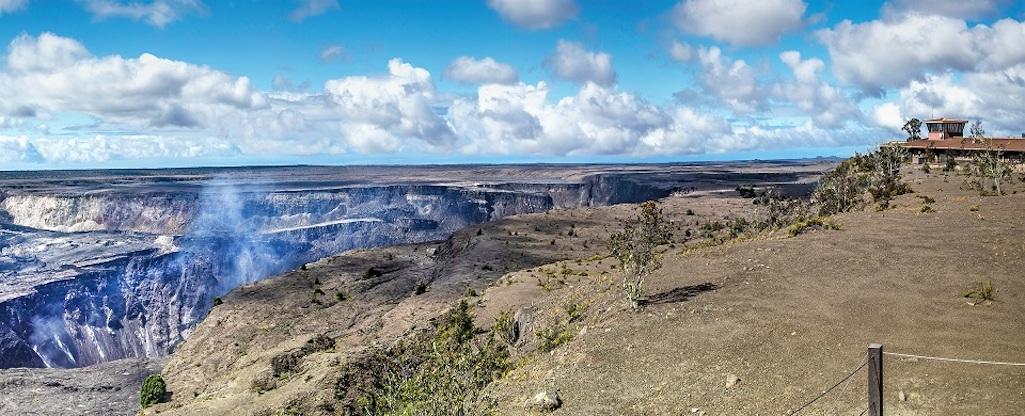
USGS and NPS facilities on Kīlauea caldera post 2018 eruption NPS Photo/Janice Wei
Plans to replace facilities damaged by Kīlauea volcano's months long eruption in 2018 have been approved by the National Park Service at Hawai'i Volcanoes National Park, where work could begin in March. However, the work doesn't currently include replacing the visitor center.
Under the Disaster Recovery Project approved this week, the Park Service will move forward most of the elements of the proposed action that went out for public review during the environmental assessment for the project. The park is revisiting the location of the replacement visitor center as a future planning and compliance effort based on public and consulting party feedback received during the EA review period.
“We mahalo everyone who shared their feedback on the Disaster Recovery Project,” said Hawaiʻi Volcanoes Superintendent Rhonda Loh. “We reviewed all the comments closely, and it is heartening to see how much passion the community has for their park and the cherished natural and cultural landscapes it protects.”
The focus of the 2018 Disaster Recovery Project is to repair, replace, relocate, or remove critical park infrastructure and U.S. Geological Survey-operated facilities and equipment damaged during the most destructive eruptive events in Hawai‘i in the last two centuries.
Beginning as early as March 2023, the National Park Service and USGS will:
• Deconstruct the Geochemistry Annex, Jaggar Museum, and Okamura building in the Uēkahuna bluff area.
• Repair the existing comfort station in the Uēkahuna bluff area.
• Repair and improve the overlook in the Uēkahuna bluff area.
• Construct a natural surface trail and associated post-and-cable barrier to connect the overlook to Crater Rim Trail in the Uēkahuna bluff area.
• Remove and replace the existing water tanks in the Uēkahuna bluff area.
• Deconstruct temporary National Park Service office space in the park research area and relocate National Park Service offices to the former USGS Pacific Island Ecosystems Research Center buildings.
• Improve the safety of the existing park entrance and realign Crater Rim Drive, including the addition of a roundabout.
• Construct a new USGS field station by the historic ball field near Kilauea Military Camp.
Starting in May 2018, Kīlauea summit and the park underwent major changes as magma drained from the chamber beneath Halema‘uma‘u crater, and the caldera began to collapse, triggering thousands of felt earthquakes and clouds of rock and ash that continued until early August.
For nearly four months the volcano spewed lava and fractured the surrounding landscape with earthquakes. Nearly 13 square miles of the island were covered by the lava flows, which also forced thousands to evacuate their homes; more than 700 homes were destroyed by the eruptions.
The seismic activity was primarily centered near the crater, and significantly impacted buildings in the immediate vicinity on Uēkahuna bluff, including Jaggar Museum and the USGS-operated Okamura facility and equipment, resulting in the closure of the area. Hawaiʻi Volcanoes National Park closed to the public for 134 days.
The results of post-disaster assessments found that significant investment would be necessary to make Jaggar Museum and the USGS Hawaiian Volcano Observatory-operated Okamura building and Geochemistry Annex safe to occupy and operational. The buildings are surrounded by fault lines and the area continues to subside on the crater side, undermining slope stability at the existing terraces and building foundations.
Back in August 2018 during an interview with the Traveler, then-Superintendent Cindy Orlando said that replacement costs for the two buildings could reach about $50 million. The park's water and wastewater systems also were greatly impacted, and could cost another $40 million-$50 million to replace, she added at the time.



Add comment